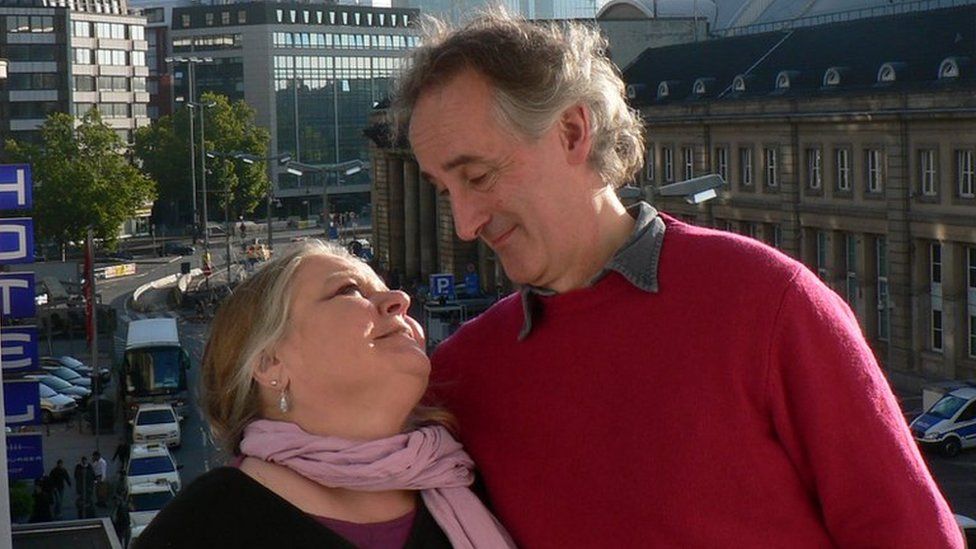-
Published2 hours ago
It was February 2017 when the message arrived on Facebook. “There’s a much bigger scandal that you need to look into,” it read. “Thousands have died and still nobody talks about it.”
That was the first time I heard from Su Gorman and Steve Dymond. I’d been working on a story about hepatitis C treatments. But they wanted me to go to Ramsgate, in Kent, to meet them about something else.
A few days later, a heavy bundle of A4 papers arrived: handwritten notes, photocopies of old documents, press clippings from the Kent Messenger newspaper.
I quickly learnt that Su was not someone you could easily argue with – or put off with an excuse.
Train to Kent coast
She had met Steve at Exeter university in the mid-1970s, where they both studied Russian. They married on 25 October 1980, which was, Su was fond of pointing out, the anniversary of the Bolshevik revolution.
Steve had been born with a mild form of the bleeding disorder haemophilia. He didn’t really need a new type of treatment, called Factor VIII, but he was given it anyway.
We now know that whole batches of the blood product, made from pooled or mixed donations, often from the US, were contaminated with deadly viruses.
Much of the blood had been donated by high-risk donors, such as prison inmates and drug users. If just one was carrying a virus, the entire batch could be contaminated.
I read the bundle of documents and later took a train down to the Kent coast where Su and Steve lived in a small bungalow, not far from the seafront.
It was the first of perhaps half a dozen trips over the next few years as I – and other journalists – continued to report on what would become a national scandal.
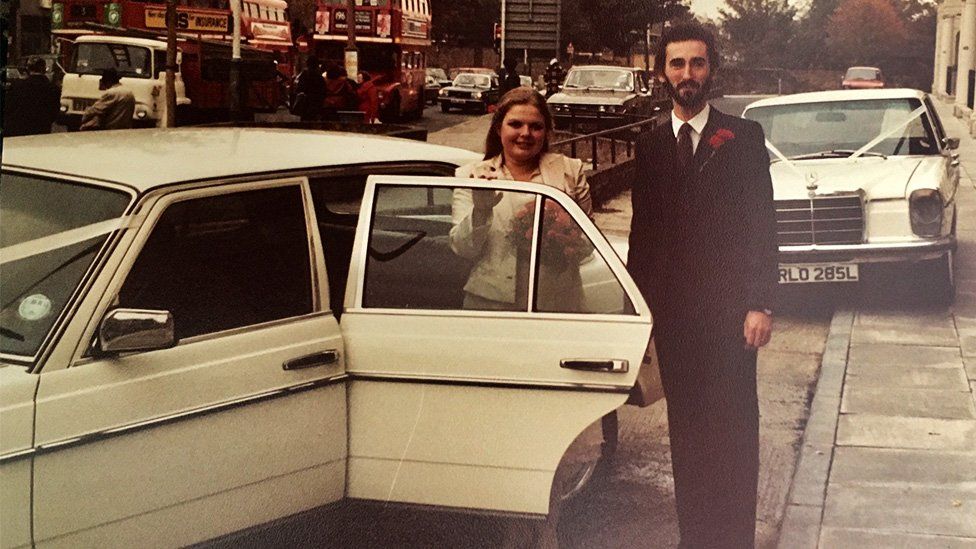
Steve had first been told something might be wrong in 1983.
His local hospital called and warned he may have been exposed to HIV, or HTLV-3 as the virus was then known. At the time, there was no quick test. The couple had to wait 18 long months until they were given the all-clear.
“It was an absolutely terrifying period,” Su said to me, a time when the “fear and panic” around Aids was only just starting to emerge. Su and Steve put off having children, something they both deeply regretted later in life.
Around 1,250 haemophiliacs were infected with HIV as part of the infected blood scandal, external. Two thirds lost their lives before modern antiretroviral drugs became available.
But HIV was not the only virus hidden inside Factor VIII.
By the late 1970s, the existence of hepatitis C was known by scientists – even though the virus itself wasn’t formally identified until 1989.
Hep C affects people in different ways. Some who are infected fight off the virus straight away and have no further symptoms. In others, it can persist in the body for years – or even decades – before starting to damage the liver, causing cirrhosis and cancer.
‘Mr Grumpy’
In 1994, Su and Steve were living and working in France and trying for a baby. When Steve was told he had Hep C, they were quickly taken off their IVF programme.
“Within 24 hours we found out we would never have children and that he was going to die early,” said Su. They returned to England.
Steve worked as a teacher, Su as a social worker. But Steve started to develop the symptoms of a chronic hepatitis C infection – he had difficulty concentrating and would suffer brain fog.
“He would often be in a terrible mood and get angry for no reason,” said Su. “We called hepatitis C ‘Mr Grumpy’. It was the guest who came to stay.”
For almost a year, Steve was given a debilitating treatment, Interferon, to try to eliminate the virus from his body. It had a success rate of less than 50%. It didn’t work for Steve.

Infected blood: Read more
You can find more stories here.

By then, Su and Steve had slowly started to make contact with other people in the same situation, including two other haemophiliacs, Andy Evans and Gareth Lewis, who went on to set up a pressure group called Tainted Blood, in 2006.
“Pretty quickly we had to take on more of a campaigning role,” says Andy, who was infected with both hepatitis C and HIV as a child.
Soon an official organisation was needed with a membership large enough to challenge the then Labour government’s decision not to open a public inquiry into the scandal. Tainted Blood – or TB – quickly recruited 500 members.
It now has more than 1,800.
Charm and intense browbeating
Su was a whirlwind of energy, often calling up journalists like me and demanding to know why we hadn’t covered the latest developments in more detail. She was clever, angry and driven. Steve was calm, measured and very funny.
By 2014, they were becoming increasingly involved in campaigning.
Su had contacts at her fingertips. If she didn’t know the answer to a question, she could put you in touch with someone who did within minutes.
She often used a combination of charm and intense browbeating to convince the most reluctant members of the community to speak out in print or on TV.
“She was an absolute force of nature,” says Andy. “She took it all on as though it was her personal duty to do so.”
After years of campaigning and setbacks, in July 2017, then Prime Minister Theresa May finally announced a UK-wide public inquiry into the infected blood scandal.
Su and other campaigners were delighted, but saw the decision as a political one.
The Conservative government had just lost its majority in the House of Commons and needed the support of the Democratic Unionist Party, in Northern Ireland, which backed an inquiry.
The news came as Steve’s health started to rapidly decline.
He had a tumour removed from his liver and varices had formed on his stomach wall – both a direct result of the hepatitis C he had been infected with.
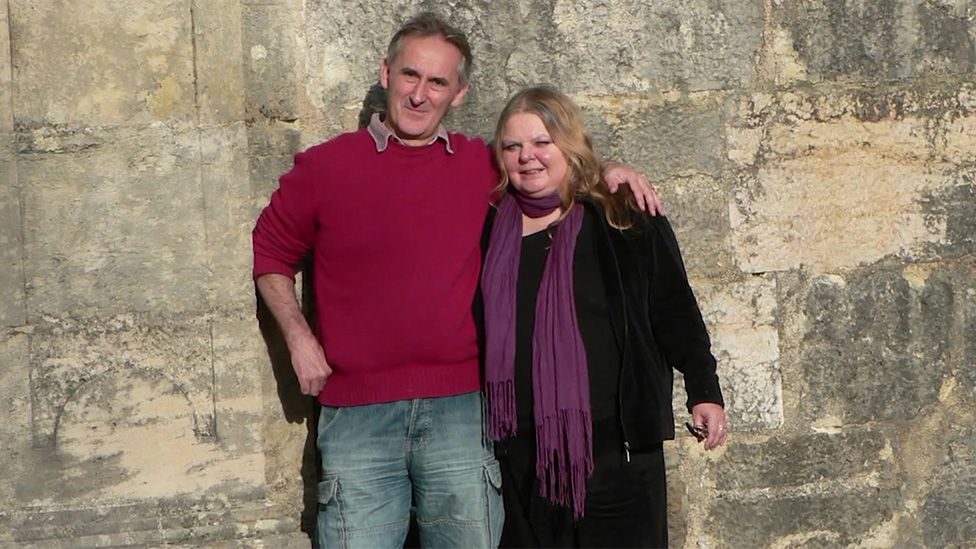
He was upbeat but in pain when I used to visit him at the specialist liver unit in Kings College Hospital, London.
He was, however, determined to see the start of the inquiry and on that day – 28 September 2018 – he appeared live on the BBC alongside Su and a panel of guests.
It was a “bittersweet moment”, he said. He spoke about how he hoped the inquiry would “have the courage and the bravery” to get to the truth.
But he was clearly struggling. And when we had a coffee after the show, it was obvious Su was concerned.
A few months later, just before Christmas, she texted me out of the blue saying he had been rushed to hospital with a “gut bleed”.
Steve died, aged 62, on 23 December 2018 of organ failure – ultimately caused by the treatment he was given as a young man.
“He knew I was there and he said to me, ‘I love you’,” Su said. “Then at one in the morning, as he was holding my hand, he left me.”
Steve was buried in the couple’s favourite spot, overlooking Dartmoor National Park in Devon. His cause of death was given as liver failure, cirrhosis and “hepatitis C infection acquired from a contaminated blood product”.
He is one of about 350 haemophiliacs who, the inquiry estimates, have lost their lives to hepatitis C as part of this scandal. Another 1,640 NHS patients are thought to have died from the disease after being given a contaminated blood transfusion.
In the months after Steve’s death, Su didn’t back away from the campaign. She was a regular at the inquiry as it started taking witness evidence, hearing from people who had been infected as well as doctors, health officials and government ministers from the time.
This video can not be played
To play this video you need to enable JavaScript in your browser.
She gave evidence herself in June 2019 and was allowed to play part of an interview I filmed with Steve before his death.
In it, he said: “I want to try to understand how so many warnings, from as early as the 1950s, were ignored, and how any government can put a small, vulnerable part of their community at such severe risk.”
“And for those responsible,” he added. “I’d like them to never get another night’s sleep again.”
They should both here
I last saw Su in late July 2023, in central London.
We grabbed a pizza with a colleague as we waited for Chancellor Jeremy Hunt to give evidence to the inquiry about financial compensation.
A month later, one of her friends called me to say she had been found in her static home in Devon. She had collapsed and died, aged 68, of heart failure.
Nearly six years after it opened, the public inquiry into what’s been called the worst treatment disaster in NHS history will publish its findings on Monday.
Neither Su nor Steve will get to read the findings.
“They should both be here to see this. And I feel desperately sad that they’re not,” says Andy Evans. “We’ve lost so many brilliant people, who all contributed so much to the fight.”
The government has described the scandal as an “appalling tragedy which never should have happened”. It is expected to announce more details of a final compensation scheme for all those affected later in the week.
You can follow Jim on X, external.

Infected Blood: Time for Answers
Jim Reed meets the families of some of the children with bleeding disorders who were infected with HIV, to discuss their campaign for justice and what they hope for from the inquiry.

-
-
Published1 day ago
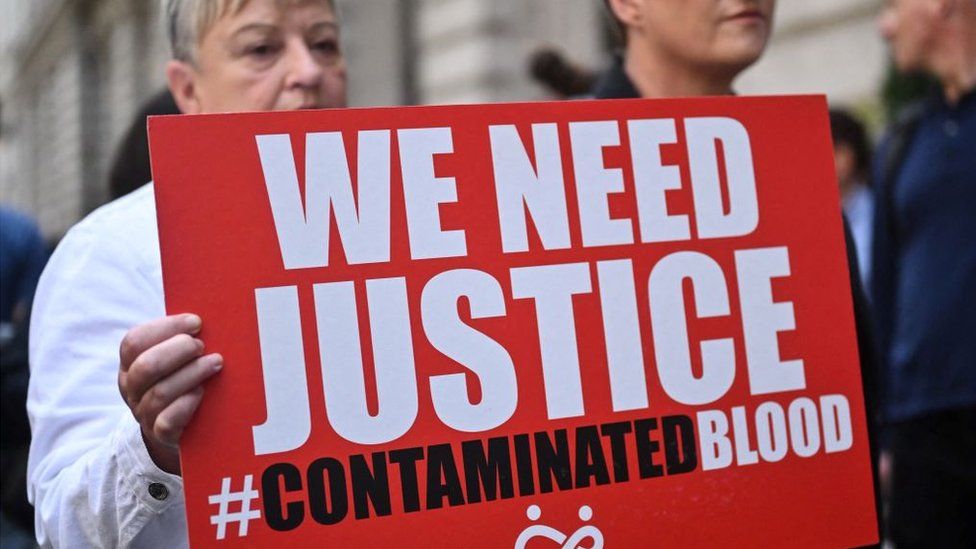
-
-
-
Published5 days ago
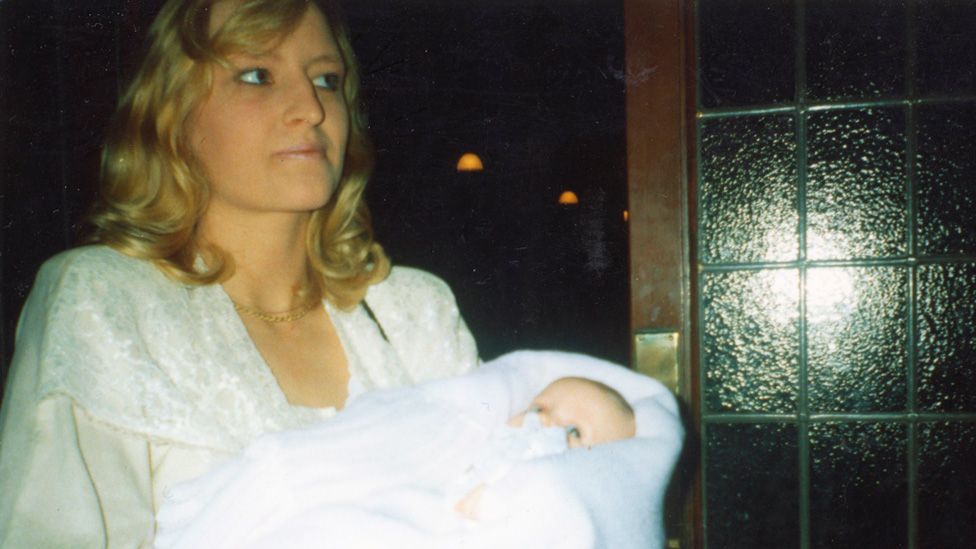
-
-
-
Published9 May

-
